Progress does not stand still and regularly pleases us novelties. However, in retrospect it is difficult to understand what were the trends and why they were needed? This site contains a selection of things, looking at which there is only one question: "It's all THAT» ?!
1. Suit for bear hunting h3> 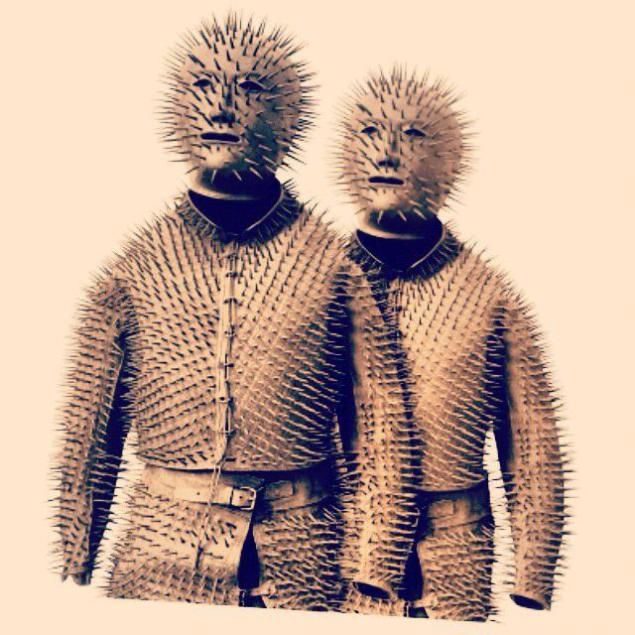
This weird design, transforms man into a kind of fish-ball - a suit Siberian Bear Hunter or daredevil involved in the fight with a bear. To hunt alone, this "chain mail", of course, was too heavy: hard to imagine that in this outfit person could move freely and even more so to run fast. But when this was not necessary (for example, when fighting or hunting walking group), the suit is well protected from the bear bites and claw strikes.
2. The Belgian version of the powder tester h3> 
The earliest device for testing power of the gun powder, which has a record, was invented in 1578 by Bern. It is a small cylinder with a tightly fitting lid on the loop. Gunpowder blew in and the angle at which the lid was raised, it was believed, pointed out the power of gunpowder.
3. Oftalmotrop - the device that illustrates the eye movement, and the whole structure of the human visual system h3> 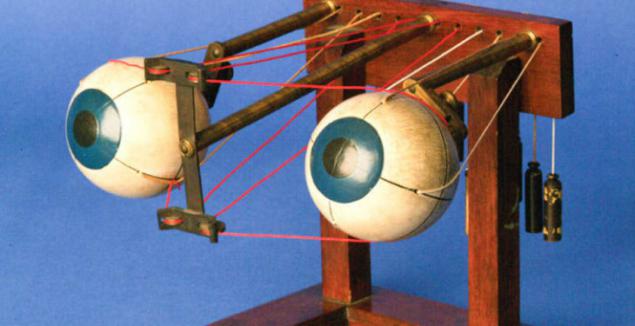
In fact, it is just a model of the eyeballs (they are made as hollow balls, moving around its own center of rotation). Eyeballs are driven by eye muscles - the muscles are performing the role of six strings attached at different locations to the eyeballs and the waste back, as in the eyes of the present. All cords are thrown through the blocks and balanced little weights. Pulling the cord or other suitably rotate the model of the eyeball.
4. Cruet h3> 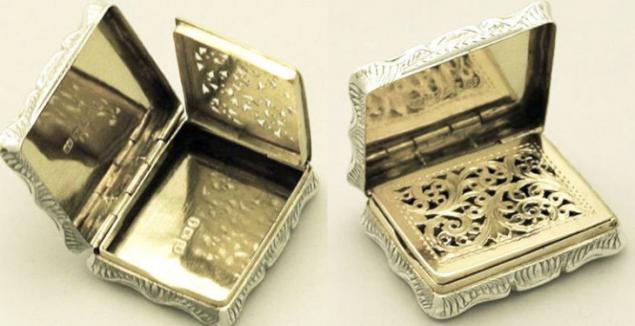
As is well known from the literature of the XIX century, ladies of those times every minute fainted. But often the cause of syncope was not an excess of feeling, and too tight corsets, evaporation from the wallpaper (often in the paint containing arsenic or lead, which led to poisoning) or simply horrible smells in the streets, did not know the sewer.
Therefore, ladies carried a bottle of smelling salts or small Cruet, in which there was cotton wool soaked in vinegar or ammonia. At the first feeling of malaise was supposed to open the lid and take a breath.
5. Mailbox h3> 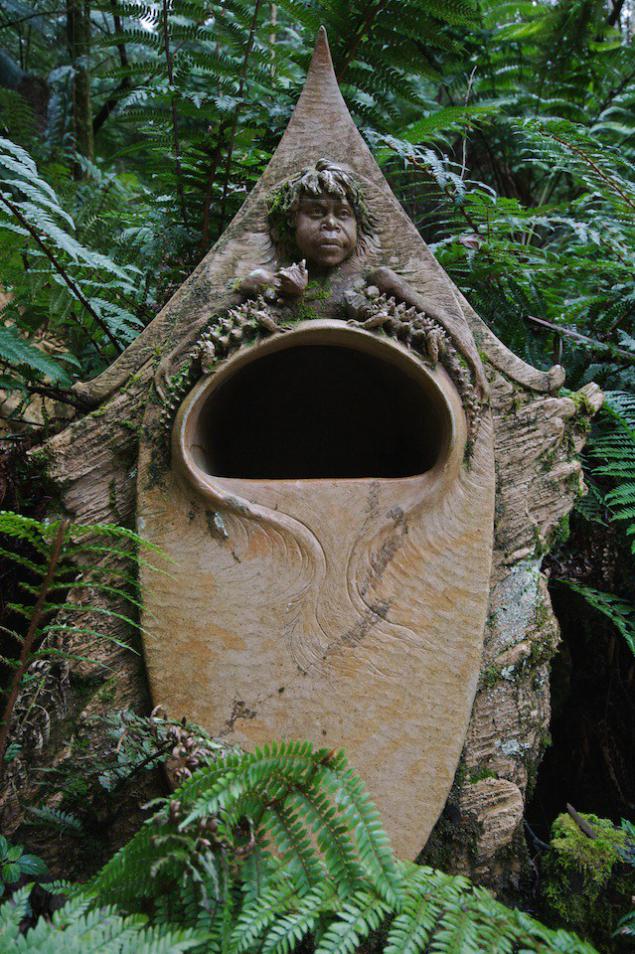
Apply mailboxes for an exchange of letters became a sailor in the XVI century. The sea route from Europe to India was long and dangerous, and thus sailors reported trusted recipients, the number of people on board, and the direction of travel destination.
Cape of Good Hope at the southern tip of Africa became a place of exchange of letters. Epistles were placed in boxes and hid in the appointed place, concealing them under the stones to a stranger could not find a note. Passing ships came into the bay and took the records from the cache, instead of leaving her.
6. Badges for services in the brothels of the Wild West h3> 
These tokens were paid in the brothels of naughty services in the XIX century in the United States. Using the badge was convenient for owners of establishments - it minimizes the possibility of women to leave yourself a lot of money and unleash the client in the process.
7. This kind of credit card h3> 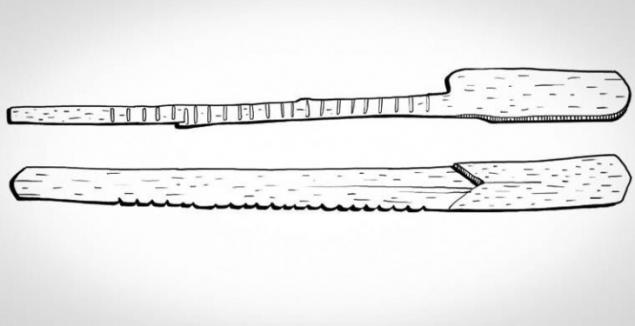
Nicks on borrowed product made at the same time on both poles. One kept the buyer, the other - the seller that exclude fraud. When the debt is paid off, sticks destroyed.
8. Disgraceful flute or shandflёte h3> 
It was used in Germany in XVI-XVII centuries for the public humiliation of poor musicians, as well as punishment for a minor violation of the laws: slander, profanity, blasphemy and heresy. The name "instrument" was a sight reminiscent of the flute. Shandflёte were made from different kinds of fruit trees.

The metal ring is worn on the neck, fingers are inserted into the terminals. The heavier the wine, the more gripping strips. The punishment was compounded by the fact that the accident exposed the pillory in front of jeering crowds. It looked as if the unfortunate plays the flute, and the pain that he felt, caused laughter and delight the audience. Sometimes torture could last several days.
9. Set vampire hunter h3> 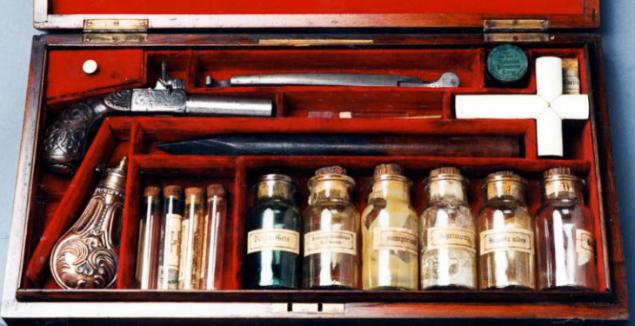
Fearsome suitcase looks like it confiscated or maniac took a souvenir from the shooting of the next Hollywood film about vampires. But in fact such a set - no props and no accessory for Halloween, but quite the real thing in the life of our ancestors.
10. Catcher tears or slёznitsa h3> 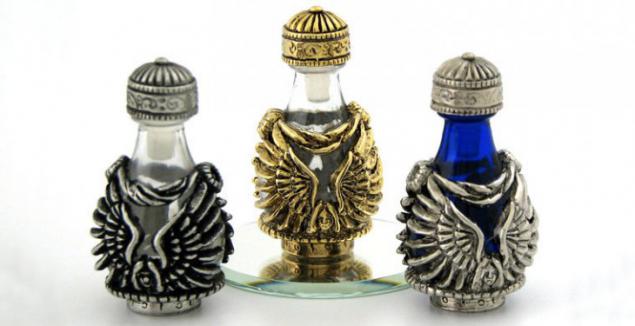
A small vessel with a narrow neck made so that you can press it straight to the corner of the eye. Its purpose - to collect the tears, and the story has more than three thousand years.
Receptacles for tears were popular, for example, in Persia: a man returning home after the fight, the first thing checked tear bottles of their wives, to determine whether they are greatly missed.
11. Ring-defensive, h3> 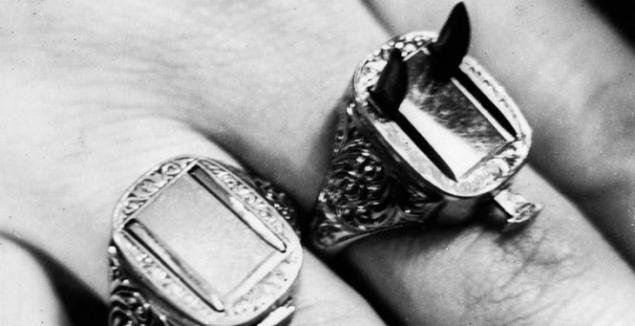
In the Victorian era, when the quality and quantity of coverage on the streets of major cities in poor, crime in the streets were commonplace. Therefore, to ensure their safety Victorians invented a variety of devices.
With two small buttons in a ring reclined sharp blades - and the advantage in a street fight there and then found himself on the side of the holder.
12. Mortseyf h3> 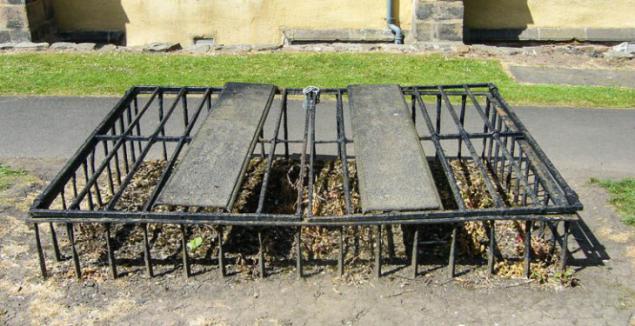
Mortseyfami called steel or iron grilles, hoods, which put on the graves.
At the beginning of the XIX century, with the development of medicine and anatomy in England and Scotland, there was a great need for cadavers for dissection. But God-fearing Victorian society reigned persistent hostility to the graves by the rules: even cremation was greeted as something absolutely terrible, monstrous and satanic.
13. "Clockwork canary" or a mechanical simulator birdsong h3> 
At the end of the XIX century to produce the mechanical box with the voices of birds began Blaise Bont, then his case continued son Charles and grandson Lucien, improve the mechanism already in the XX century - their production runs up to the 1950s.
14. Traps for fleas h3> 
Inside swirling bloholovok as bait put a small piece of tissue soaked in honey, blood, resin or fragrances. Zapolzshee inside the insect stuck to the bait. Bloholovki wore a wig and hair in women under the clothing and on the neck like a pendant and placed in the bedroom by the bed. Catching fleas were an everyday affair and to some extent even erotic.
15. Women in these figurines showing the doctor where it hurts them h3> 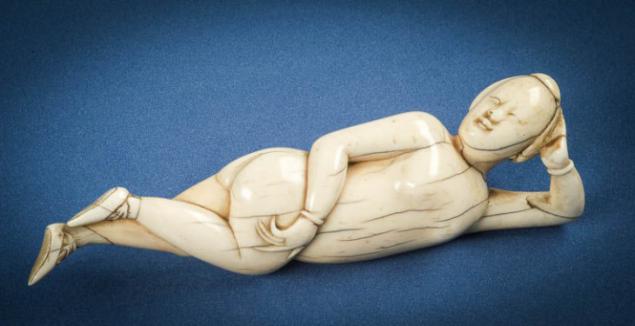
Doctors in the past were only men, and they were forbidden to directly touch the senior patients. Therefore, for the diagnosis used special doll. They were made of ivory and ivory, wood, and even pearl 10-25 cm in height.
An interesting detail: on some Chinese dolls visible bandages for the formation of a small foot. I do bring a doll doctor or the ladies had their own, while historians can not be accurately set.
16. It strigil scraper or simply to cleanse the body h3> 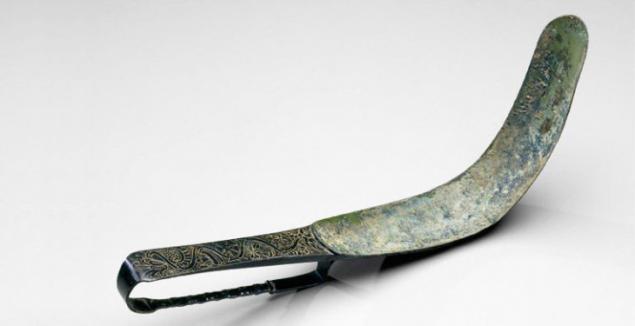
During Roman times, when there was no soap, shower gels, shampoos, scrubs and other achievements of chemistry, all the dirt, sweat and dust scraped off the body such scrapers.
17. Predictor storms h3> 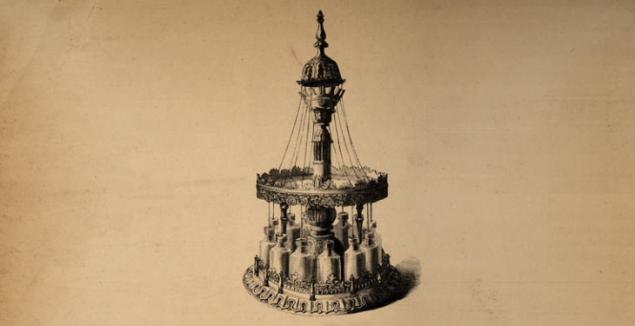
This invention belongs to Dr. George Merriweather, who lived in the town of Whitby in England in the XIX century.
One doctor said that before the coming storm leeches begin to behave restlessly, and they decided to use this feature. He came up with a cunning machine, which was called "predictor of the storm».
The circle was put 12 bottles of a capacity of one pint. On the neck of each bottle is a metal tube with a piece of whalebone and wire attached to a hammer. Sensing the approach of a storm, leeches started to climb up the bottle and touched whalebone, which, in turn, pulled the wire and powered hammers strike the bell.
18. Toaster h3> 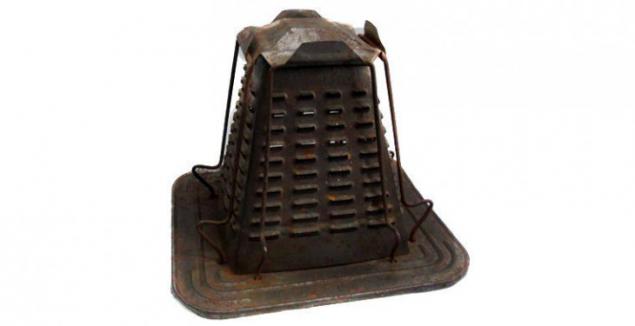
Toasters in the XIX century, were extremely popular and therefore embodied in a variety of designs, for example, some particularly expensive models was ceramic core heats more evenly, double walls and removable "door" to make it easier to clean the inside of the device, as well as two Removable wire Stand to put back the pieces of bread to preheat or to fresh toast not cooled quickly.
Simpler models is a simple pyramid tin with holes in the side panels as the body - under the pyramid smoldering coals and thus leaning against the panels roasted pieces of bread.
19. Remover bullets h3> 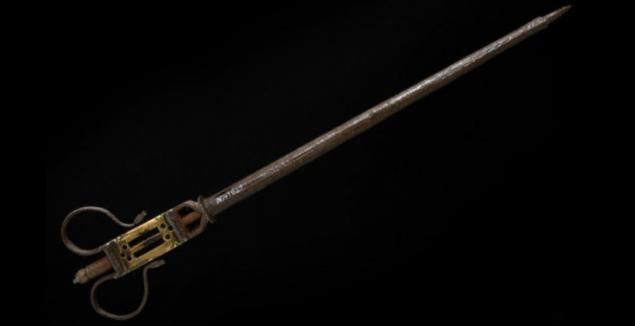
The structure of the extractor is quite simple: in a hollow tube is long something like a screwdriver with screws it is lowered into the wound, a bullet grope, to pick up and pull out.
Despite its apparent benefit remover bullets often bring much more trouble than relief: anesthesia and antiseptic in those days there was virtually no, so many patients die of shock, while others - from the entering of an infection.
20. Smoky enema h3> 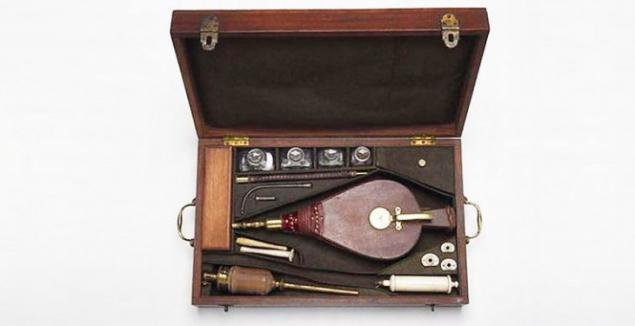
The unit it was very simple: smoky enema was similar to normal, but instead of pears she had fur from porcine stomach, which was fed smoke into the anus of the patient. Tobacco was considered a good remedy for sleepiness and cold and even prescribed to patients. Such a procedure was believed, it was to help with the pain in the stomach, and enlivened drowned. It was believed that the smoke dries out all the excess moisture in the body.
21. Holder for small items or Shuttle h3> 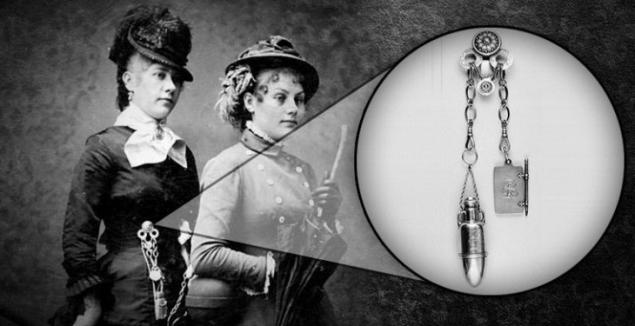
Chatelain (in Russian this word really not, if translated literally - "a bunch of housewives", in English pronunciation - Chatelain) was a bunch of decorative detail, is attached to the belt. With this bunch hung an impressive number of chains, which, in turn, were attached various little things that might need hostess and had to be always at hand: keys, thimbles, watches, scissors, printing, Cruet (in case you will bad).
22. Theft alarm system h3> 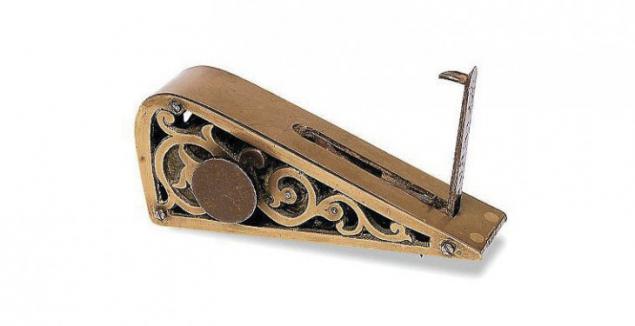
As at the present time, the citizens of the XIX century suffered from burglar. As protection applied revolutionary mechanical alarm from robbers. The alarm was placed under the door from the inside, the door propped pin. When the door is opened from the outside, the pin fell and got the call, loudly announced to the owners about what other people in the house.
23. Artificial leech h3> 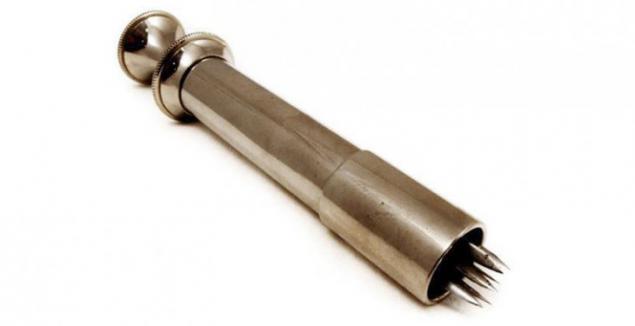
Artificial leech was invented in 1840, to reduce the amount of use of these leeches. It was believed that an artificial leech more effective, hygienic and sterile, though one of its kind inspired much greater horror patients than living creature.
via fishki.net/1676431-20-vewej-iz-proshlogo-pri-vide-kotoryh-voznikaet-vopros---chto-jeto-takoe.html
















































